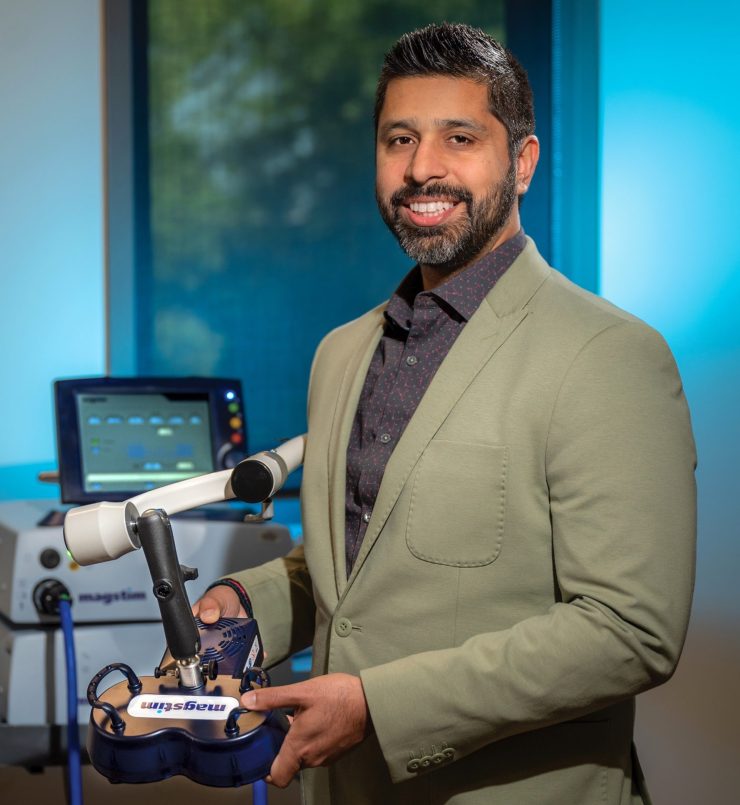Magnetic stimulation of a group of nerves key to how our gut and brain communicate may help correct the conversation that goes awry in painful, debilitating diabetic gastroparesis, researchers say.
say.
Patients come to Amol Sharma, MD, because their stomachs constantly hurt, they are always nauseous and they can’t or won’t eat or drink. Sometimes they can’t get out of the hospital because of nausea and vomiting.
“Gastroparesis is suspected in about 2% of the population, which is the about the population of Missouri, but only confirmed in .2% of the population so it’s a rare disorder,” says Sharma, gastroenterologist at the Medical College of Georgia and Wellstar MCG Health, specializing in neurogastroenterology and gastrointestinal motility.
It’s also not well understood, but physicians like Sharma are beginning to find that it’s a dysfunction in the two-way communication between the gut and the brain. More common problems like irritable bowel syndrome, also are thought to be a disorder of this gut/brain interaction, he notes.
Sharma’s lab has developed a painless, noninvasive magnetic stimulation therapy called ThorS-MagNT which they are using to target and reset the hyperactive firing of a small group of nerves at the midback, a sort of midpoint of communication between the stomach and the brain. He has good evidence from a small pilot study that one-hour sessions targeting this nerve group for five successive days can significantly reduce the disease’s debilitating symptoms.
Sharma has received a three-year, $958,000 grant from the National Institute of Diabetes and Digestive and Kidney Diseases to conduct a larger trial.










